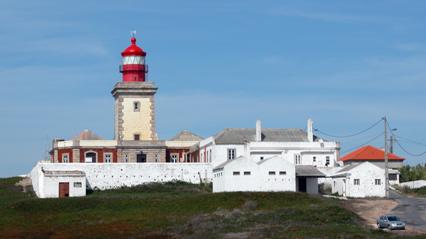Complaints from international visitors to the United States
about hostile treatment by immigration officials have
prompted them to clean up their act, the official in charge
of border controls has said. The complaints, many from
Britons travelling for business or pleasure have forced the
agency to institute a code of conduct to ensure officers
treat visitors with respect. Complaints had come from
all over the world, but the department was particularly
struck by the number from Britain. One of the major
issues is said to be the handcuffing, detention and
deportation of some potential visitors who had committed
“minor technical visa violations” previously, such as briefly
or unwittingly breaching a 90 day permission to stay. “While
we must — and will — secure our border against terrorists,
we must treat all travellers professionally and courteously,”
said the agency.
But meanwhile…
By subjecting most visitors to scans of their faces and
fingers, the United States will this week expand a mass
surveillance system that threatens freedom and race
relations, a privacy watchdog says.
Now most visitors entering the United States will have to put
each index finger in turn on a glass plate that
electronically scans it, and to have a digital photo taken.
The United States says its US-VISIT program — already in
place for travellers requiring visas and now being rolled out
more widely — will add an average of just 15 seconds to
entry checks and will enhance security.
It says the biometric data will be stored in databases, along
with personal information such as full name, date of birth,
citizenship, sex and passport number, and can be accessed by
border, consular, immigration and law enforcement officials.
London-based rights group Privacy International said in a recent
report that the scheme relied on flawed
technology and opaque, error-strewn watch lists on which
innocent people could find themselves wrongly identified as
security threats.
Ryanair are advertising jobs: http://www.careerjet.co.uk/jobs_ryanair.html
We at Globetrotter Towers are idly wondering whether benefits
include free flights located in the bathroom.
New routes added Ryanair airline announced last month
it would begin flying on Oct. 31 to Riga from London,
Frankfurt, Germany, and Tampere, Finland, after the Latvian
government cut airport taxes in an attempt to lure more
tourism and make Riga International Airport a regional
hub. It is Ryanair's first venture into one of the
10 new European Union member states. Commentators have
wryly noted that it is not clear who is most excited about
the new route into Riga, travellers into Riga or Latvians
looking to travel out. Uhh… didn't Michael O
Leary say that Ryanair would not be expanding into the new EU
accession countries?
No unions, please Ryanair is about to get into
another spat, this time with SAS. Ryanair is not
unionised and promises to pay more than union rates if its
employees negotiate their contracts directly with the company
rather than join unions for collective bargaining. Most
SAS workers do belong to a union. Swedish trade union
HTF recently handed out sick bags to passengers flying on
Ryanair from Nykoping, what Ryanair refer to as Stockholm,
some 160 km south west of Stockholm as part of a wider
campaign organized by the International Transport
Workers' Federation (ITF). The white bags were printed
with claims that Ryanair staff had to work longer and for
lower pay than rivals. Speaking at a Stockholm press
conference, Chief Executive, Michael O'Leary said that
Ryanair paid more on average to staff and that its rules on
the maximum hours staff could work were the strictest in the
industry. “We are an embarrassment to a lot of trade unions,”
he went on to say. According to O’Leary, Ryanair staff
earn an average of EUR50,582 a year, more than staff at
airlines where staff are unionized, O'Leary added.
O'Leary also said Ryanair would sue Swedish newspaper
Dagens Nyheter unless it retracted reports critical of some
aspects of Ryanair's safety record.
Yet more pay as you go service Ryanair has been
looking for ways to introduce new services they can use to
boost revenues while keeping fares low. Their latest
attempt is to introduce in-flight entertainment such as
movies, chart videos, cartoons and sitcoms on all its
flights, but passengers will have to pay GBP£5, EUR7
(USD$9) per flight if they want to access movies, cartoons
and television shows on the portable units, which will not be
built into seats as on full-service carriers. Ryanair
said the system will be trialled initially on five Stansted
based aircraft from November. If successful, it will
gradually be rolled out across the airline's entire fleet
over the winter. Ryanair needs three percent of its
passengers to use the units to cover its costs. Each
plane will initially carry 24 entertainment units which would
be distributed on a first-come, first-served basis. The
units, which look like a small laptop, are the brainchild of
former aircraft baggage handler Bill Boyer who sold the idea
to his then employer, Alaska Airlines.
Boyer later founded APS, based in the industrial city of
Tacoma, south of Seattle. Ryanair is now APS's biggest
customer.
The entertainment units are Ryanair's latest push to tap
new sources of non-ticket revenue. Ryanair passengers are
also charged for drinks and food. “At the moment the ice is
free, but if we could find a way of targeting a price on it
we would,” O'Leary earlier told an airlines conference.
And finally… their blurb about themselves, Ryanair
describe themselves as being like superman, up, up and away,
they say. It took us a week to stopped laughing, and if
you don’t believe us, take a look at this: http://www.ryanair.co.uk/about/abouthome.html
Discuss this article and give feedback in our online forum


